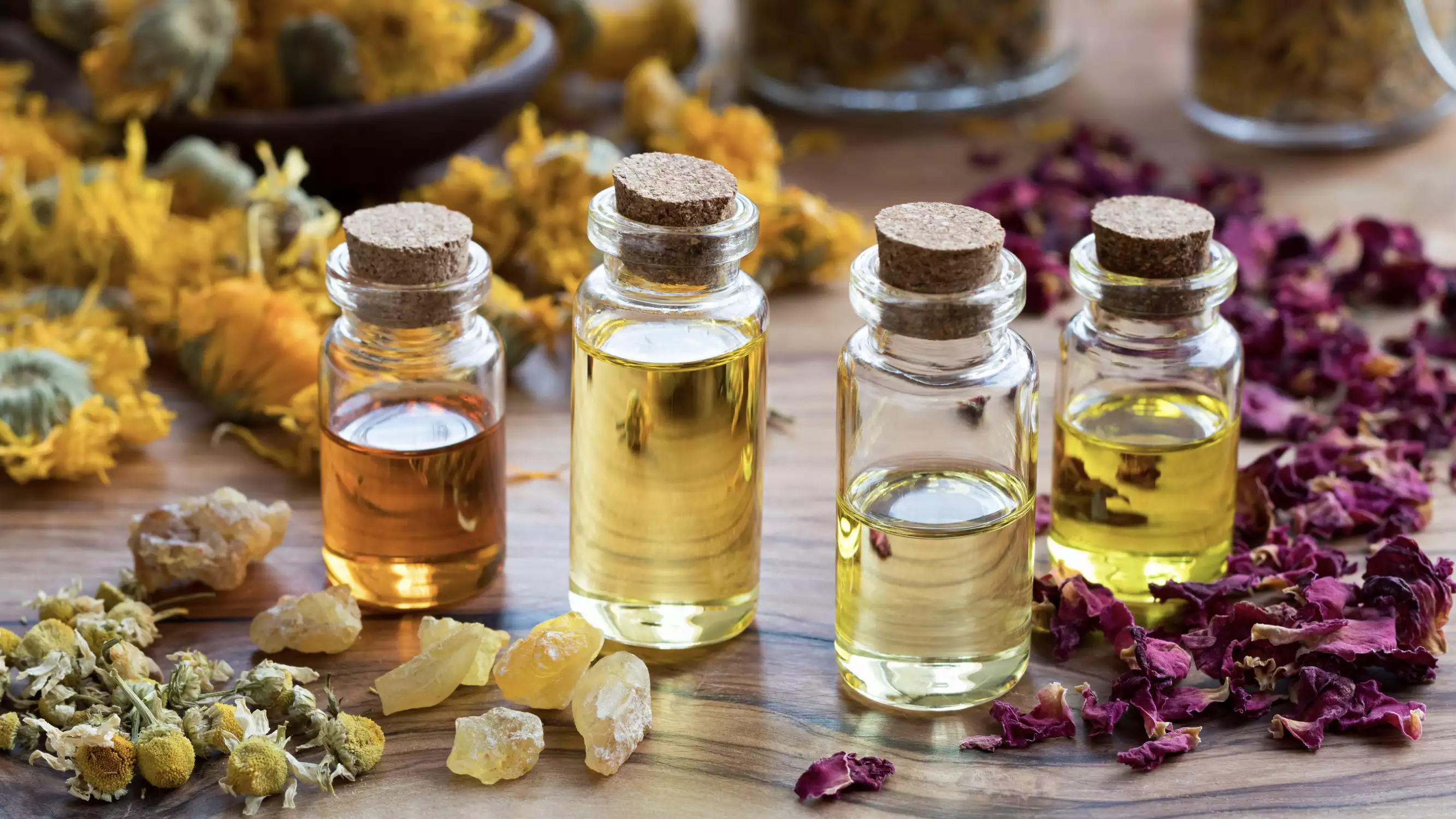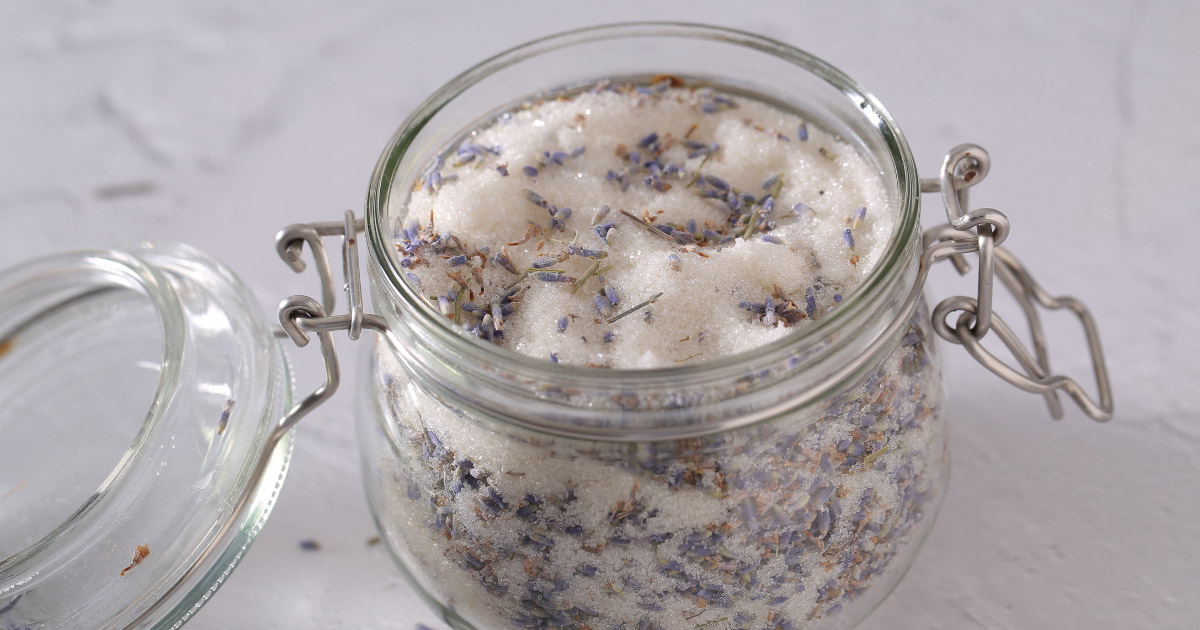How to Safely Use Essential Oils During Pregnancy
.jpeg)
A Natural Choice: Essential Oils During Pregnancy
Pregnancy is a remarkable time for both mother and baby! It’s also a delicate time. Since so many of the products a mother uses can affect her developing baby, it makes sense to keep things as natural as possible by using essential oils instead of synthetic products. It’s a great choice!
During pregnancy, essential oils can help:
Ease nausea
Relieve back pain
Calm cramps
Balance your emotions
Manage cravings
Get a good night’s sleep
Massage achy feet
Reduce swelling
Replace synthetic chemicals in household, bath, and body products
But just because essential oils are natural doesn’t mean they’re risk-free. Because essential oils are highly concentrated, even a few drops of oil can make a big impact.
Using essential oils during pregnancy requires understanding safety and respecting the vulnerability of both mother and baby.
Like many aspects of aromatherapy, there are no universally accepted guidelines for what’s safe during pregnancy. You’ll find different advice coming from different sources. That being said, there’s no need to fear! A solid aromatherapy education can help you understand essential oil safety and get the most out of these incredible natural resources!
At Aromahead Institute, we’ve been teaching a science-based approach to essential oils since 1998. We’ve taught thousands of students in over 170 countries around the world, and we stay up to date with research and new developments in the field. We’d like to share our own recommendations for using essential oils during pregnancy—safely and effectively. This is the Aromahead Approach®!
We’d like to thank authors Robert Tisserand and Rodney Young for their book Essential Oil Safety (Second Edition), which informs many of our recommendations.
Tips to Safely Use Essential Oils During Pregnancy
Trust the professionals
Our first tip is that pregnant mothers should always use essential oils under the guidance of a trained professional, like a certified aromatherapist and a midwife
Use essential oils sparingly, at low dilutions
The first trimester is the most delicate time for both mother and baby.
There isn’t a lot of research on whether essential oils cross into the placenta, so we have to err on the side of caution and assume they do. This means that any essential oils in the mother’s bloodstream could affect the fetus. That’s why we suggest using essential oils only when needed during the first trimester, like inhaling them for morning sickness.
As the pregnancy continues, you can use essential oils more often if you stick to a low dilution of 1%. That’s 5 to 6 drops of essential oil for every 1 fl oz (30 ml) of the carrier.
Even then, we still suggest using essential oils as little as possible. Instead of relying on them heavily every day, only use them when needed.
Only use pure essential oils
Stay away from synthetic fragrances, solvent extracts (absolutes), and poor-quality oils that might be “cut” or “adulterated” with other substances.
Since essential oils aren’t regulated, it’s unfortunately common to find impure oils on the market. These “oils” won’t deliver therapeutic benefits and may even harm the mother and baby.
The best way to know whether your essential oils are pure is to buy from a company that has their oils tested with GC/MS laboratory technology. This test identifies all the components present in an oil, and their percentages, like an “ingredient list.” It’s okay if you aren’t sure how to interpret the test report! It takes a trained chemist to do that. Just know that it’s reassuring when a company provides their GC/MS reports. It builds trust by demonstrating their confidence that nothing unwanted is present.
Avoid certain oils
Just as there’s no authoritative list of safety guidelines during pregnancy, there’s no list of which oils are absolutely contraindicated or unsafe. The information we have is based on experience, animal research, and common sense.
That said, here’s a short list of oils we suggest avoiding during pregnancy:
Anise Oil (Pimpinella anisum)
Birch Oil (Betula lenta)
Black Seed Oil (Nigella sativa)
Carrot Seed Oil (Daucus carota)
Cinnamon Bark Oil (Cinnamomum verum, Cinnamomum zeylanicum)
Fennel Oil (Foeniculum vulgare)
Spanish Lavender Oil (Lavandula stoechas)
Myrrh Oil (Commiphora myrrha)
Oregano Oil (Origanum vulgare)
Sage Oil (Salvia officinalis)
Wintergreen Oil (Gaultheria fragrantissima)
And here are a few oils to restrict during pregnancy (avoid them if possible, or only use a small amount):
Honey Myrtle Oil (Melaleuca teretifolia)
Lemongrass Oil (Cymbopogon citratus)
May Chang Oil (Litsea cubeba)
Melissa Oil (Melissa officinalis)
How to Use Essential Oils During Pregnancy
The simplest, safest, and often most effective way to use essential oils during pregnancy is through inhalation or topical application (on your skin).
Using an aromatherapy inhaler can get the oils into your system quickly, which can be helpful if you need urgent support, like for morning sickness, nausea, or pain relief. You’re getting a high “dose” of essential oils with every breath. We recommend about 5 to 15 drops of oil in an inhaler.
Diffusing the oils gives you the chance to inhale them at a lower concentration over a longer period of time. It’s helpful for balancing moods and cravings and for helping you relax. Diffuse about 9 drops at a time.
Applying essential oils topically can direct their benefits to a specific location, like your back, feet, or legs. This is great for pain relief and to ease swelling! In this case, keep your dilution to 1%, which is 5 to 6 drops for every 1 fl oz (30 ml) of carrier oil or butter. (And again, we suggest not using essential oils every day during the first trimester.)
You can dilute your oils in any carrier you like! Lotions are light and silky. They absorb quickly into your skin. A rich, decadent body butter takes longer to absorb, letting the oils linger on your skin for a while. And a body oil is somewhere in between.
You might even choose to leave the essential oils out of a topical blend. We love using essential oil-free body butters for pregnant bellies, like this recipe from The Aromahead Notebook. There are also blends to ease pain that don’t include essential oils, like Avo-Kombo Feel Better Butter.
If you do choose to use essential oils during pregnancy, here are some of our top choices:
Cedarwood Oil (Juniperus virginiana) – support sleep, balance mood
Cypress Oil* (Cupressus sempervirens) – reduce swelling
Frankincense Oil (Boswellia carterii) – balance mood, relieve pain, skincare
Ginger Oil (Zingiber officinale) – calm nausea, relieve pain
Lavender Oil (Lavandula angustifolia) – support sleep, balance mood, relieve pain, skin care
Peppermint Oil (Mentha × piperita) – calm nausea, relieve pain
Sweet Orange Oil (Citrus sinensis) – balance mood, relieve pain
* Some sources say to avoid cypress oil during pregnancy, but there’s no research to support that concern.
Use Essential Oils to Support Your Family!
Essential oils can be there for you through pregnancy and as your children grow.
Learn to use them for all your family’s household needs in our popular online course, Aromatherapy for Natural Living. Along with mastering aromatherapy for babies and children, you’ll learn to make your own green cleaning products, body care, first aid blends, and more. This course will empower you to care for your family naturally, reducing your reliance on harsh, synthetic chemicals.
REFERENCES
Altaei, D.T. (2012) Topical lavender oil for the treatment of recurrent apthous ulceration. American Journal of Dentistry 25, 1, 39-43.
Awadh Ali, N.A., Wurster, M., Arnold, N., Lindequist, U. and Wessjohan, L. (2009) Chemical composition and biological activities of essential oils from the oleogum resins of three endemic Soqotraen Boswellia species. Records of Natural Products 2, 1, 6-12.
Battaglia, S. (2019) The Complete Guide to Aromatherapy (Third Edition) Vol I: Foundations & Materia Medica. Zillmere, QLD, Australia. Black Pepper Creative Party, Ltd.
Buchbauer, G., Jirovetz, L., Jager, W., Plank, C. and Dietrich, H. (1993) Fragrance compounds and essential oils with sedative effects upon inhalation. Journal of Pharmaceutical Sciences 82, 6, 660-664.
De Pradier, E. (2006) A trial of a mixture of three essential oils in the treatment of postoperative nausea and vomiting. International Journal of Aromatherapy 16, 1, 15-20.
Diego MA, Jones NA, Field T, Hernandez-Reif M, Schanberg S, Kuhn C, McAdam V, Galamaga R, Galamaga M. Aromatherapy positively affects mood, EEG patterns of alertness and math computations. Int J Neurosci. 1998 Dec;96(3-4):217-24. doi: 10.3109/00207459808986469. PMID: 10069621.
Ghelardini, C., Galeotti, N., Salvatore, G., & Mazzanti, G. (1999). Local anaesthetic activity of the essential oil of Lavandula angustifolia. Planta medica, 65(08), 700-703.=
Guimarães, A.G., Quintans, J.S.S. and Quintans-Júnior, L.J. (2013) Monoterpenes with analgesic activity – a systematic review. Phytotherapy Research 27, 1-15.
Hirota, R., Roger, N.N., Nakamura, H., Song, H.-S., Sawamura, M., and Suganuma, N. (2010) Anti-inflammatory effects of limonene from yuzu (Citrus junos Tanaka) essential oil on eosinophils. Journal of Food Science 75, 87-92.
Kagawa D, Jokura H, Ochiai R, Tokimitsu I, Tsubone H (2003) The sedative effects and mechanism of action of cedrol inhalation with behavioural pharmacological evaluation. Planta Medica 69: 637-641 https://doi.org/10.1055/s-2003-41114
Perry, N. and Perry, E. (2006) Aromatherapy in the management of psychiatric disorders: clinical and neuropharmacological perspectives. CNS Drugs 20, 4, 257-280.
Tisserand, R., Young, R. (2014) Essential Oil Safety 2nd Edition. Edinburgh: Churchill Livingstone.
Woelk, H. and Schläfke, S. (2010) A multi-center, double-blind, randomised study of the Lavender oil preparation Silexan in comparison to Lorazepam for generalized anxiety disorder. Phytomedicine 17, 2, 94-99.





